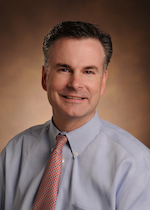Training the Physician-Scientist: Views from Program Directors and Aspiring Young Investigators
Read MSTP Director Christopher Williams, MD, PhD‘s Op-Ed published recently in JCI Insight.

Training the physician-scientist: views from program directors and aspiring young investigators.
Williams CS, Iness AN, Baron RM, Ajijola OA, Hu PJ, Vyas JM, Baiocchi R, Adami AJ, Lever JM, Klein PS, Demer L, Madaio M, Geraci M, Brass LF, Blanchard M, Salata R, Zaidi M.
JCI Insight. 2018 Dec 6;3(23). pii: 125651. doi: 10.1172/jci.insight.125651. [Epub ahead of print]
There is growing concern that the physician-scientist is endangered due to a leaky training pipeline and prolonged time to scientific independence (1). The NIH Physician-Scientist Workforce Working Group has concluded that as many as 1,000 individuals will need to enter the pipeline each year to sustain the workforce (2). Moreover, surveys of postgraduate training programs document considerable variability in disposition and infrastructure (3). Programs can be broadly grouped into two classes: physician-scientist training programs (PSTPs) that span residency and fellowship training, and research-in-residency programs (RiRs), which are limited to residency but trainees are able to match into PSTPs upon transitioning to fellowship (Figure 1). Funding sources for RiRs and PSTPs are varied and include NIH KL2 and T32 awards, charitable foundations, philanthropy, and institutional support. Furthermore, standards for research training and tools for evaluating programmatic success are lacking. Here, we share consensus generated from iterative workshops hosted by the Alliance of Academic Internal Medicine (AAIM) and the student-led American Physician Scientists Association (APSA).